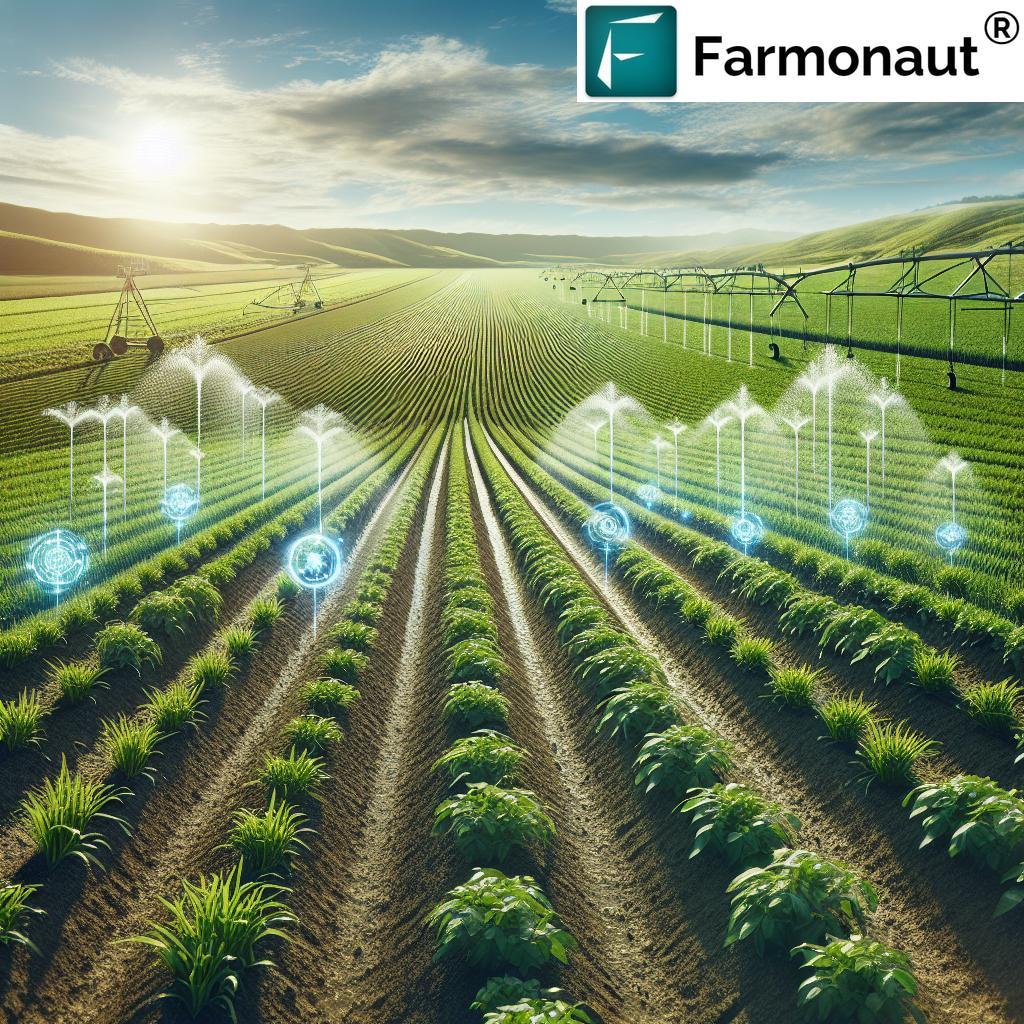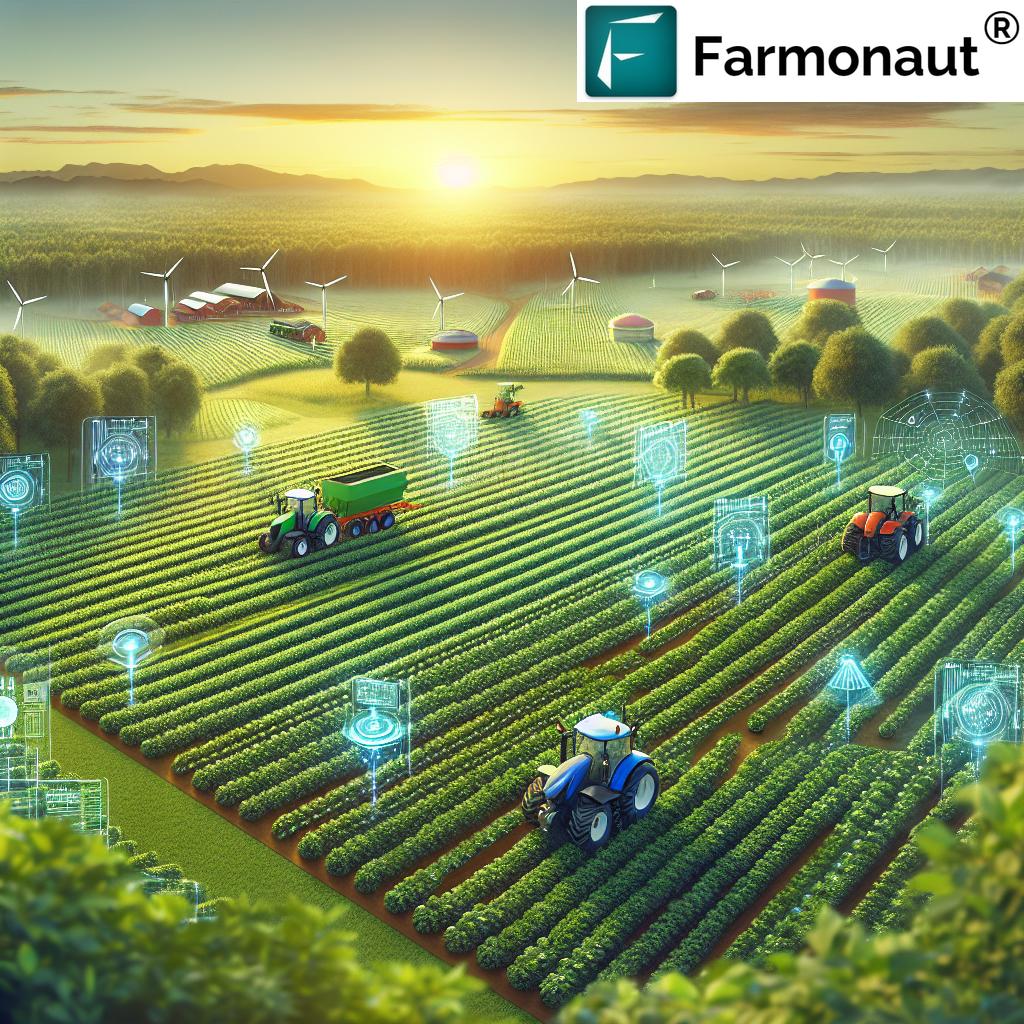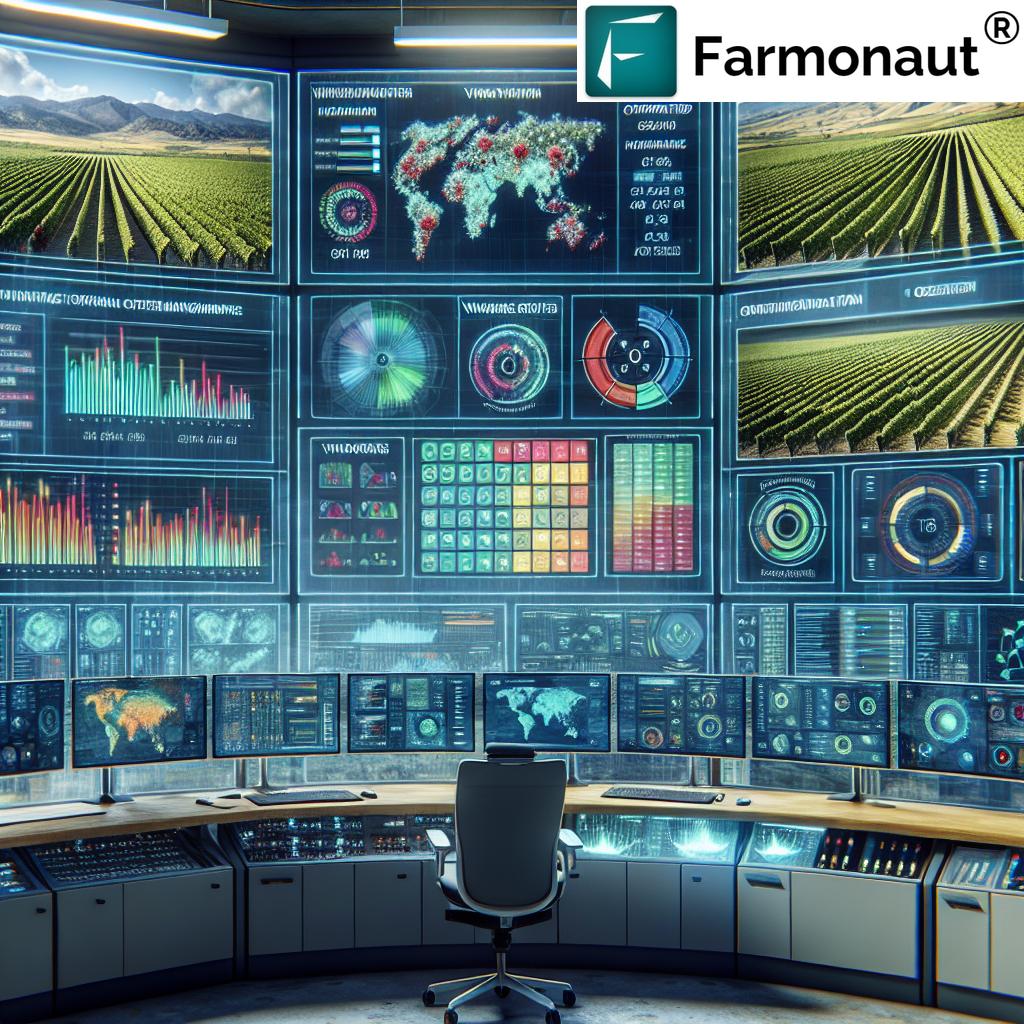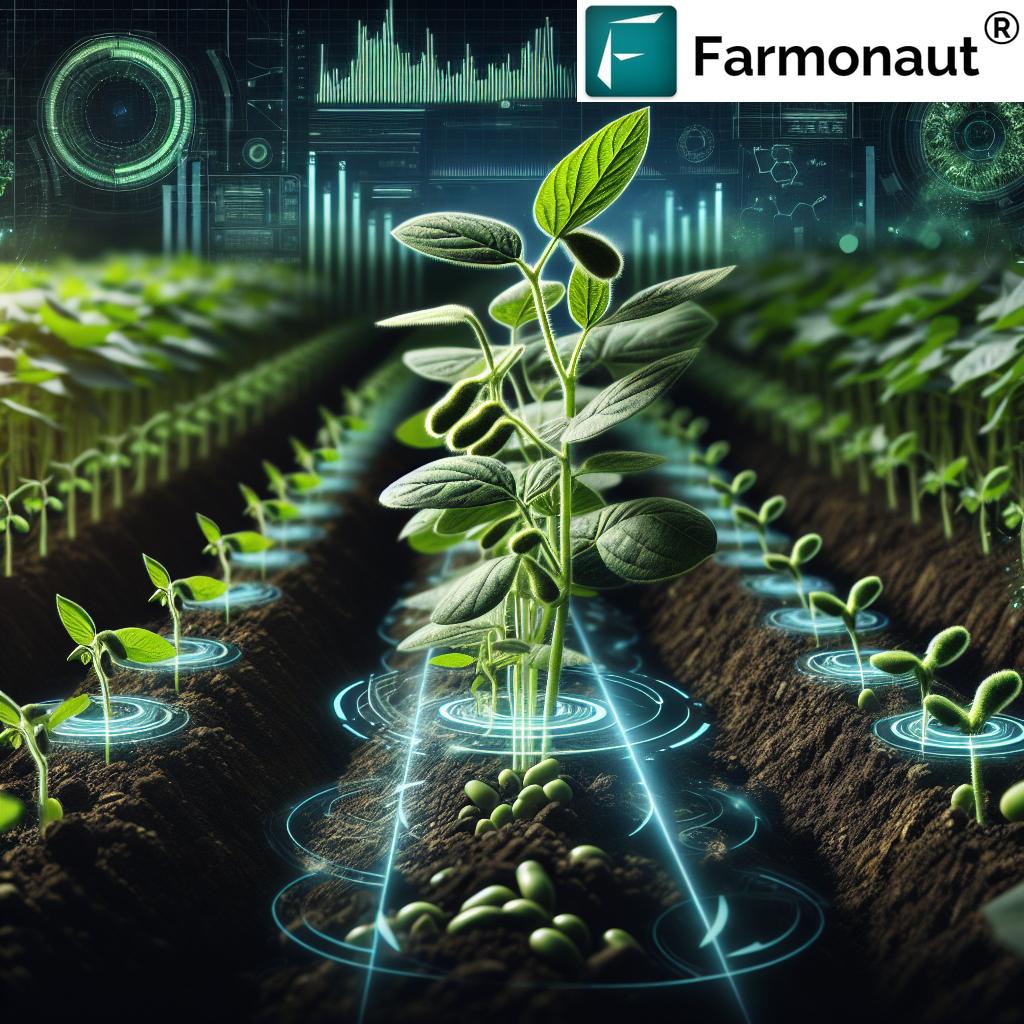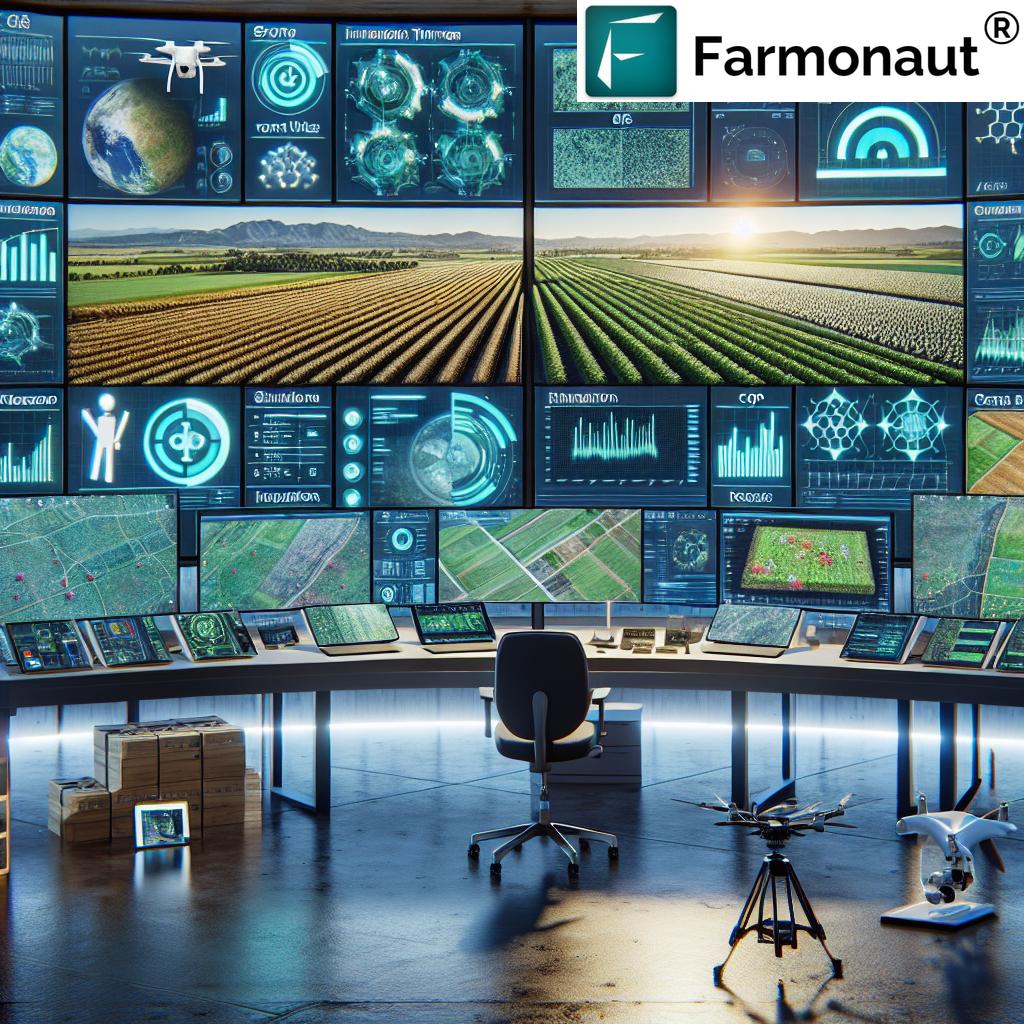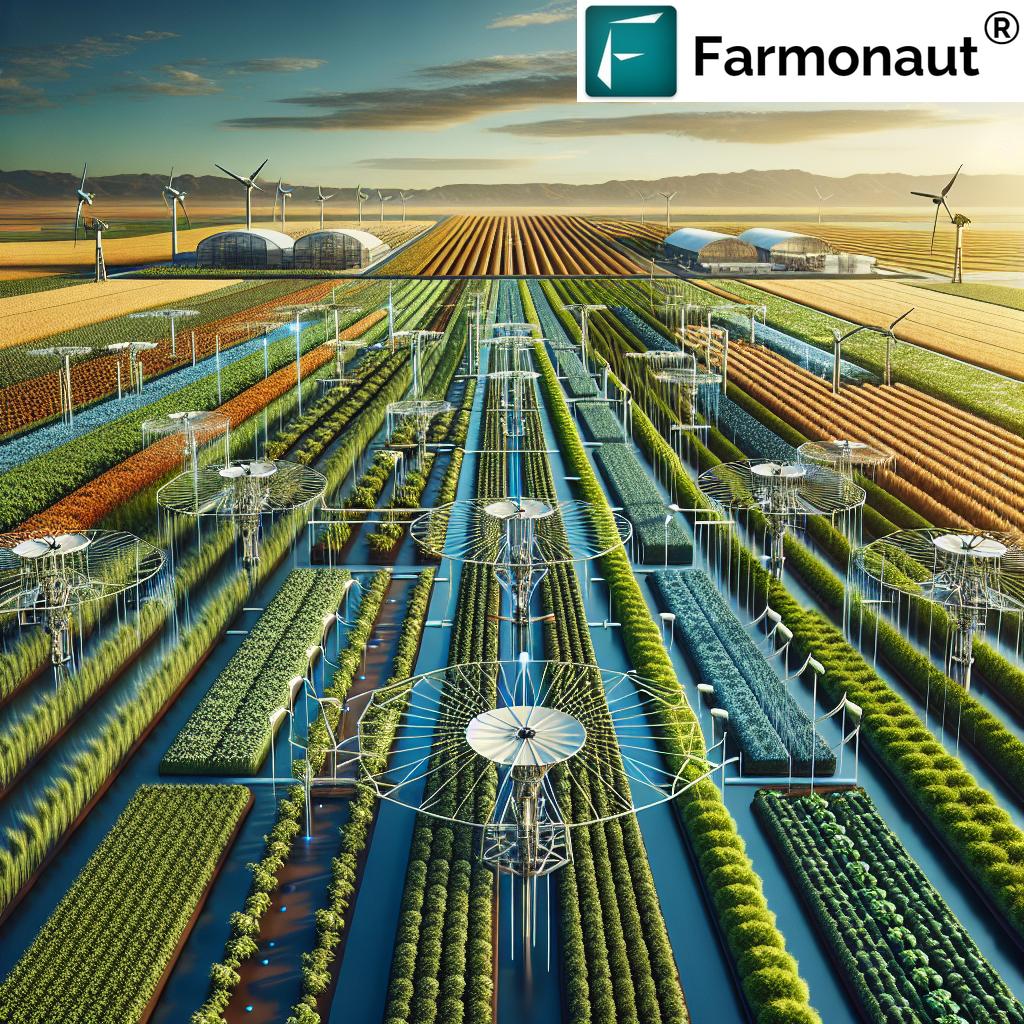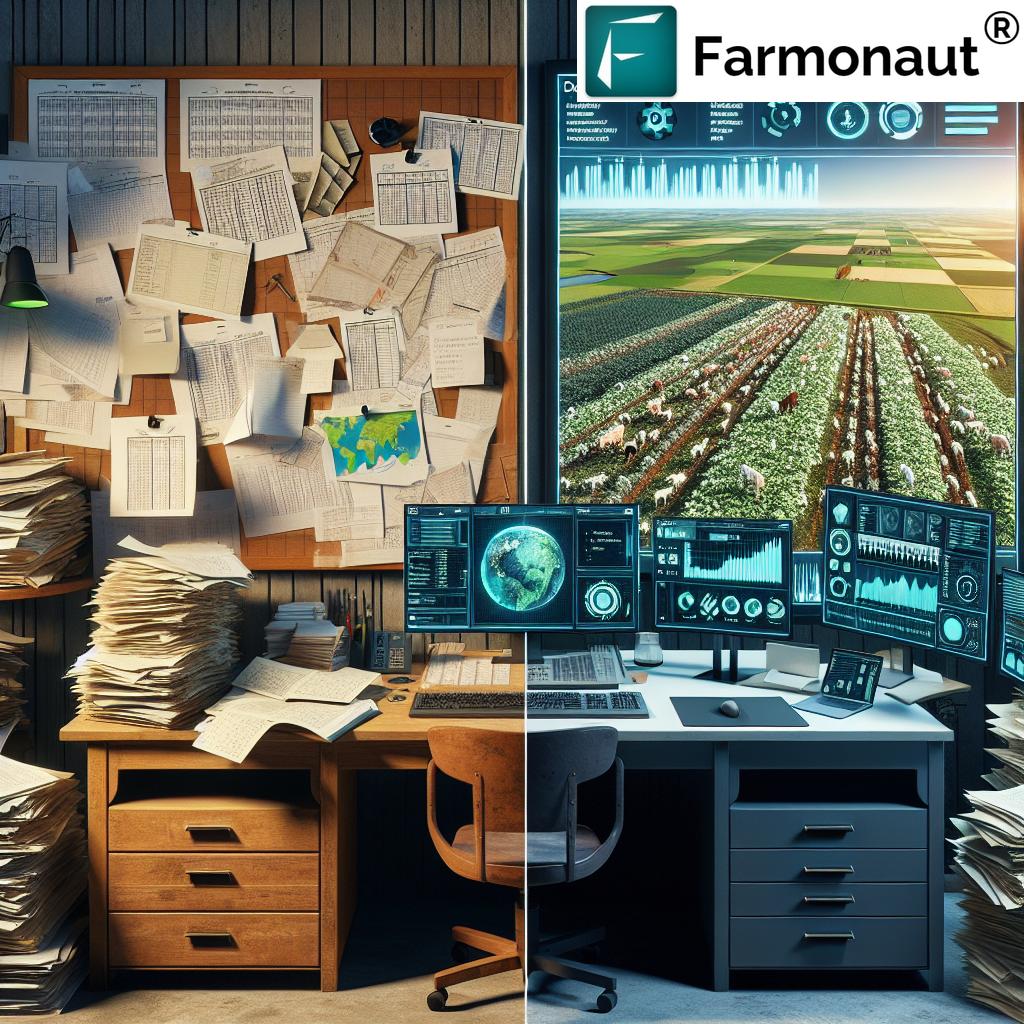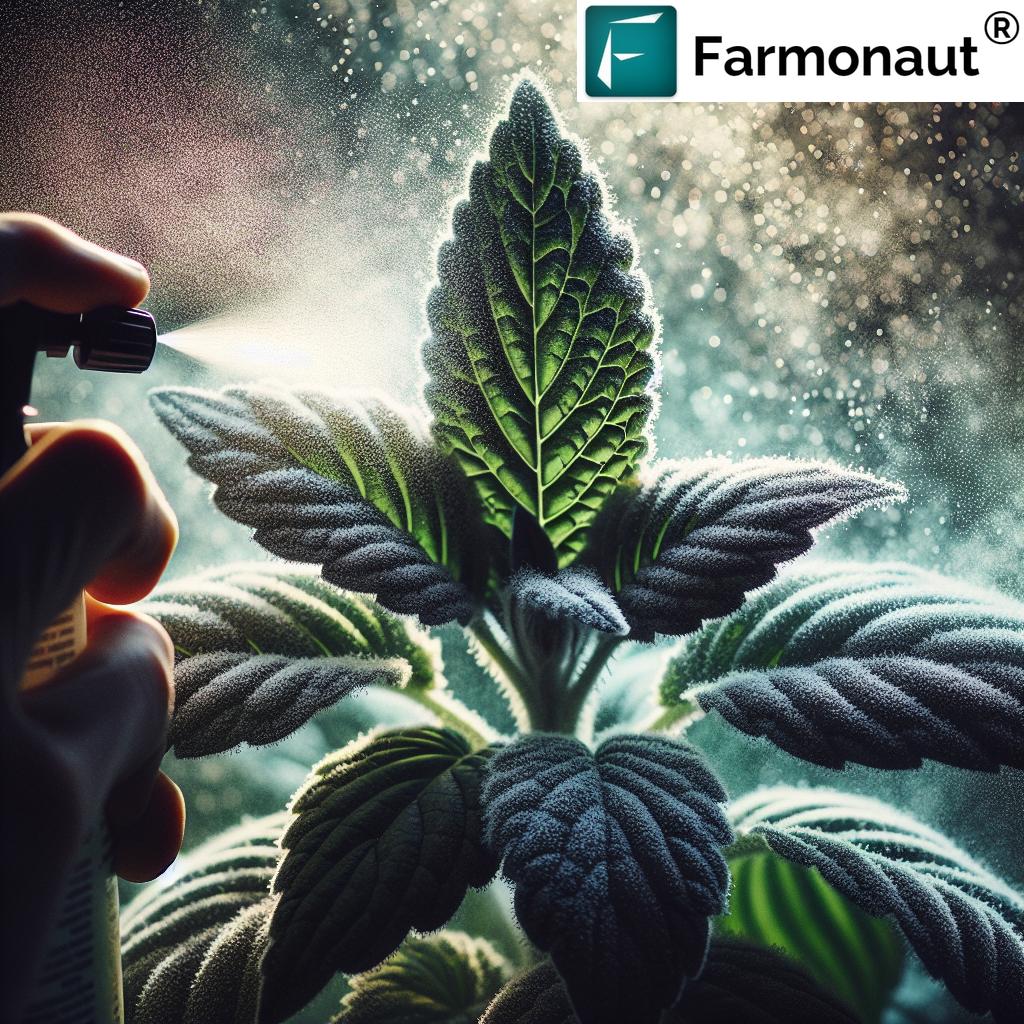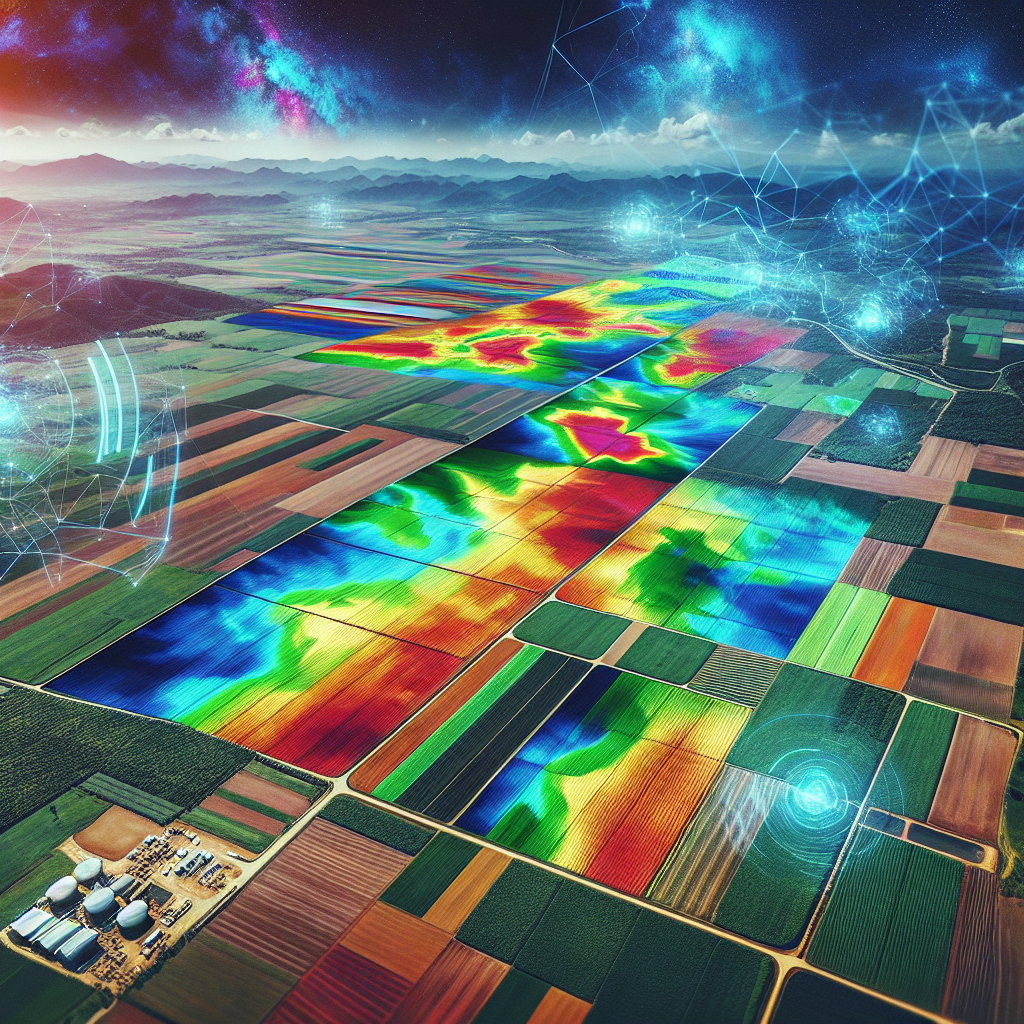Revolutionizing Agriculture: How Precision Irrigation Technologies Boost Crop Yields and Conserve Water Resources
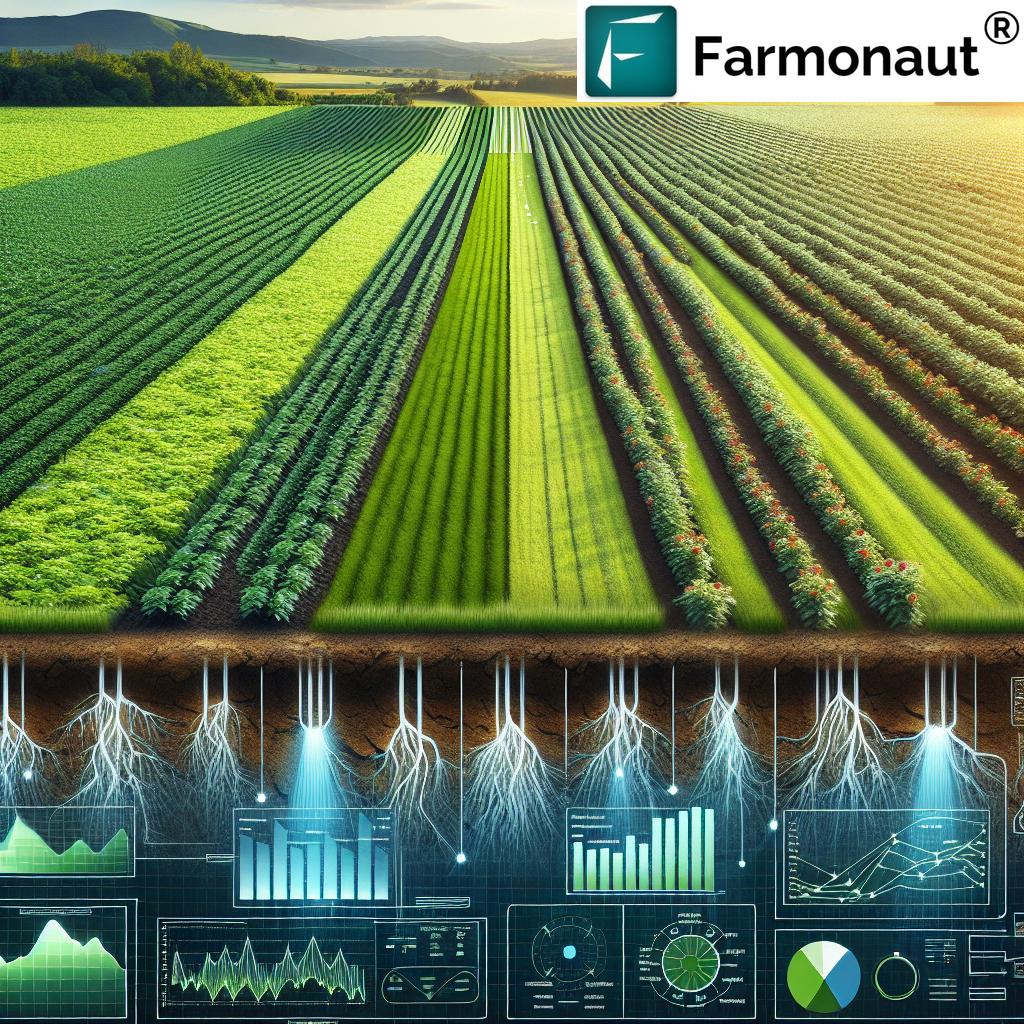
“Precision irrigation can reduce water consumption by up to 50% compared to traditional methods, significantly conserving water resources.”
In the face of growing global food demand and increasing water scarcity, the agricultural sector is undergoing a remarkable transformation. At the forefront of this revolution are precision irrigation technologies, which are reshaping the way we approach farming and water management. In this comprehensive exploration, we’ll dive deep into the world of advanced irrigation techniques, examining how they’re boosting crop yields, conserving precious water resources, and paving the way for a more sustainable agricultural future.
The Evolution of Irrigation: From Traditional to Precision
Irrigation has been a cornerstone of agriculture for thousands of years, but the methods we use today are a far cry from the rudimentary techniques of the past. Traditional irrigation systems, while effective in their time, often led to significant water waste and inefficient resource utilization. However, with the advent of precision agriculture technology, we’re witnessing a paradigm shift in how we approach water management in farming.
Precision irrigation methods represent a leap forward in agricultural practices, offering a suite of benefits that address many of the challenges faced by modern farmers. These advanced systems leverage cutting-edge technologies such as remote sensing, data analytics, and automated control mechanisms to deliver water and nutrients exactly where and when crops need them most.
Key Components of Precision Irrigation Systems
- Soil Moisture Sensors: These devices provide real-time data on soil water content, helping farmers make informed decisions about when to irrigate.
- Weather Stations: On-site weather monitoring equipment collects data on temperature, humidity, wind speed, and rainfall, allowing for more accurate irrigation scheduling.
- Variable Rate Irrigation (VRI) Systems: These advanced setups can adjust water application rates across different areas of a field based on specific crop needs and soil conditions.
- Remote Sensing Technology: Satellite imagery and drone-based sensors provide valuable insights into crop health and water stress levels across large areas.
- Data Analytics Platforms: Sophisticated software tools process and analyze data from various sources to generate actionable irrigation recommendations.
By integrating these components, precision irrigation systems create a holistic approach to water management that’s tailored to the unique needs of each field and crop type.
The Benefits of Precision Irrigation
The adoption of precision irrigation technologies offers a multitude of advantages for farmers, the environment, and society as a whole. Let’s explore some of the key benefits:
1. Water Conservation
One of the most significant benefits of precision irrigation is its ability to drastically reduce water consumption. By delivering water directly to plant root zones and adjusting application rates based on real-time data, these systems can achieve water savings of up to 50% compared to traditional irrigation methods. This not only helps conserve precious water resources but also reduces the strain on local water supplies and aquifers.
2. Improved Crop Yields
Precision irrigation techniques have been shown to significantly boost crop yields. By ensuring that plants receive the optimal amount of water at the right times, these systems promote healthier root development, improved nutrient uptake, and overall better plant health. Studies have demonstrated yield increases of 20-30% or more for various crops when precision irrigation methods are implemented.
3. Enhanced Resource Efficiency
Beyond water savings, precision irrigation also leads to more efficient use of other agricultural inputs. For example, when combined with fertigation systems, these technologies can optimize the application of fertilizers and other nutrients, reducing waste and minimizing environmental impact.
4. Cost Savings
While the initial investment in precision irrigation systems can be substantial, the long-term cost savings are often significant. Reduced water and energy consumption, coupled with improved crop yields, can lead to a rapid return on investment for many farmers.
5. Environmental Benefits
By minimizing water waste and reducing the use of agricultural chemicals, precision irrigation contributes to environmental conservation efforts. These systems help prevent soil erosion, reduce runoff, and protect local ecosystems from the negative impacts of excessive irrigation.
Advanced Irrigation Techniques in Focus
Let’s take a closer look at some of the most innovative and effective precision irrigation techniques that are transforming modern agriculture:
Subsurface Drip Irrigation
Subsurface drip irrigation (SDI) is a highly efficient method that delivers water directly to plant root zones through buried tubing. This approach offers several advantages:
- Minimal water loss through evaporation
- Reduced weed growth due to dry soil surface
- Improved nutrient delivery when combined with fertigation
- Lower energy costs compared to sprinkler systems
SDI systems are particularly effective in arid regions and for row crops such as tomatoes, cotton, and corn.
Variable Rate Irrigation (VRI)
VRI systems represent the cutting edge of precision irrigation technology. These systems use a combination of GPS technology, field mapping, and real-time sensors to adjust water application rates across different areas of a field. Benefits of VRI include:
- Tailored water application based on soil type, topography, and crop needs
- Ability to avoid over-watering in low-lying areas or under-watering on slopes
- Integration with other precision agriculture tools for comprehensive farm management
VRI is particularly valuable for fields with varying soil types or topography, allowing farmers to maximize efficiency and crop uniformity.
Fertigation
Fertigation combines irrigation with fertilizer application, delivering nutrients directly to plant roots through the irrigation system. This method offers several advantages:
- Precise control over nutrient delivery
- Improved nutrient uptake efficiency
- Reduced fertilizer waste and environmental impact
- Ability to adjust nutrient ratios based on crop growth stages
Fertigation is widely used in greenhouse production and is gaining popularity in field crops, particularly when combined with drip irrigation systems.
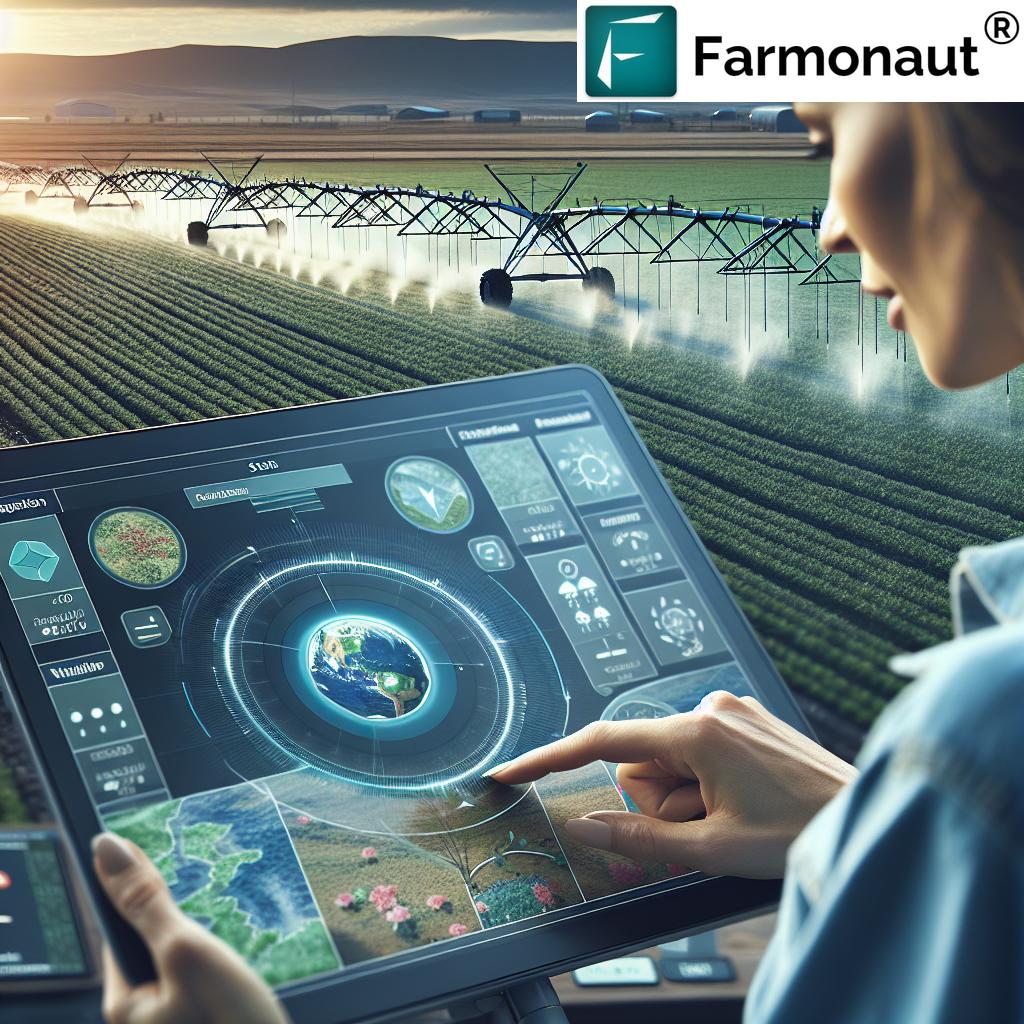
“Advanced irrigation techniques utilizing remote sensing and data analytics can increase crop yields by 20-30% while optimizing resource use.”
The Role of Data Analytics and Remote Sensing in Precision Irrigation
The power of precision irrigation lies not just in the physical delivery systems but also in the sophisticated data analytics and remote sensing technologies that guide their operation. These tools provide farmers with unprecedented insights into their fields and crops, enabling more informed decision-making and precise resource management.
Remote Sensing for Irrigation Management
Remote sensing technologies, including satellite imagery and drone-based sensors, play a crucial role in modern irrigation management. These tools offer several key benefits:
- Crop Health Monitoring: Multispectral imagery can detect signs of water stress in crops before they become visible to the naked eye, allowing for early intervention.
- Soil Moisture Mapping: Remote sensing can provide large-scale maps of soil moisture content, helping farmers identify areas that may need more or less irrigation.
- Evapotranspiration Estimation: Satellite data can be used to estimate crop water use, helping to fine-tune irrigation schedules.
- Field Variability Analysis: High-resolution imagery can reveal variations in soil type, topography, and crop growth patterns across a field, informing variable rate irrigation strategies.
These remote sensing capabilities are particularly valuable for large-scale farming operations, where manual field scouting can be time-consuming and impractical.
Data Analytics for Precision Agriculture
The vast amount of data generated by precision irrigation systems and remote sensing technologies requires sophisticated analytics tools to translate into actionable insights. Advanced data analytics platforms offer several key functionalities:
- Predictive Modeling: By analyzing historical data and current conditions, these systems can predict future irrigation needs and potential crop stress events.
- Irrigation Scheduling Optimization: Analytics tools can generate precise irrigation schedules based on crop water requirements, weather forecasts, and soil moisture data.
- Resource Use Efficiency Analysis: These platforms can track water and energy use over time, helping farmers identify opportunities for improved efficiency.
- Yield Forecasting: By integrating multiple data sources, analytics tools can provide more accurate yield predictions, helping farmers make informed decisions about resource allocation and harvest planning.
The integration of data analytics into precision irrigation systems represents a significant leap forward in agricultural decision-making, moving from reactive to proactive management strategies.
Overcoming Challenges in Precision Irrigation Adoption
While the benefits of precision irrigation are clear, there are several challenges that farmers and the agricultural industry must overcome to realize its full potential:
1. Initial Investment Costs
The upfront costs of implementing precision irrigation systems can be substantial, particularly for small and medium-sized farms. However, it’s important to consider the long-term return on investment in terms of water savings, yield improvements, and reduced labor costs.
2. Technical Expertise
Operating and maintaining precision irrigation systems requires a certain level of technical knowledge. Providing training and support to farmers is crucial for successful adoption and implementation.
3. Data Management and Integration
The large volumes of data generated by precision irrigation systems can be overwhelming. Developing user-friendly interfaces and ensuring seamless integration with existing farm management systems is essential.
4. Scalability and Adaptability
Precision irrigation solutions need to be scalable and adaptable to different farm sizes, crop types, and local conditions. This requires ongoing research and development to create flexible, customizable systems.
5. Regulatory and Policy Considerations
In some regions, water use regulations and policies may not yet be aligned with precision irrigation practices. Advocacy and education efforts are needed to update regulatory frameworks to support these water-saving technologies.
The Future of Precision Irrigation
As we look to the future, several exciting trends are emerging in the field of precision irrigation:
Artificial Intelligence and Machine Learning
AI and machine learning algorithms are becoming increasingly sophisticated, enabling more accurate predictions of crop water needs and automated decision-making in irrigation management.
Internet of Things (IoT) Integration
The proliferation of low-cost, connected sensors is creating new opportunities for real-time monitoring and control of irrigation systems, even in remote locations.
Blockchain for Water Management
Blockchain technology has the potential to revolutionize water rights management and create more transparent, efficient water markets, particularly in water-scarce regions.
Robotics and Automation
Autonomous irrigation systems and robotic crop monitoring technologies are on the horizon, promising to further reduce labor costs and improve precision in water management.
Farmonaut’s Role in Advancing Precision Agriculture
In the rapidly evolving landscape of precision agriculture, Farmonaut stands out as a pioneer in leveraging satellite technology and data analytics to empower farmers. While not directly involved in manufacturing irrigation equipment, Farmonaut’s platform provides valuable insights that can significantly enhance the effectiveness of precision irrigation strategies.
Key features of Farmonaut’s technology include:
- Satellite-based crop health monitoring
- AI-driven advisory systems for farm management
- Real-time weather forecasting and analysis
- Soil moisture estimation using remote sensing data
By integrating these capabilities with precision irrigation systems, farmers can make more informed decisions about water management, optimizing resource use while maximizing crop yields.
To explore how Farmonaut can enhance your precision agriculture practices, visit their web app:
For developers interested in integrating Farmonaut’s satellite and weather data into their own applications, check out their API:
Detailed documentation for the API can be found here:
Farmonaut’s mobile apps are also available for both Android and iOS devices:
Comparison of Precision Irrigation Technologies
| Technology | Water Saving Potential (%) | Crop Yield Improvement (%) | Initial Investment Cost | Maintenance Requirements | Compatibility with Remote Sensing | Data Analytics Integration | Suitable Crop Types | Environmental Impact |
|---|---|---|---|---|---|---|---|---|
| Variable Rate Irrigation | 30-50 | 15-25 | High | Medium | High | High | Row crops, Cereals | Low |
| Subsurface Drip Irrigation | 40-60 | 20-30 | Medium | Low | Medium | Medium | Vegetables, Orchards | Low |
| Fertigation Systems | 20-40 | 25-35 | Medium | Medium | Low | Medium | Greenhouse crops, High-value crops | Medium |
| Sensor-based Irrigation | 25-45 | 10-20 | Low | Low | High | High | All crop types | Low |
This table provides a comprehensive overview of the main precision irrigation technologies, highlighting their relative strengths and applications. It’s important to note that the actual performance and suitability of each technology can vary depending on specific farm conditions, crop types, and local climate.
Conclusion: Embracing the Precision Irrigation Revolution
As we face the dual challenges of increasing food production and conserving water resources, precision irrigation technologies offer a powerful solution. By leveraging advanced sensors, data analytics, and automated control systems, these innovative approaches are transforming the way we manage water in agriculture.
The benefits of precision irrigation are clear: significant water savings, improved crop yields, enhanced resource efficiency, and reduced environmental impact. While challenges remain in terms of initial investment costs and technical expertise, the long-term advantages make precision irrigation an essential component of sustainable agriculture practices.
As we look to the future, the continued integration of artificial intelligence, IoT technologies, and robotics promises to further enhance the capabilities of precision irrigation systems. Companies like Farmonaut are at the forefront of this revolution, providing farmers with the tools and insights needed to make informed decisions about water management and crop health.
By embracing these technologies and continuing to innovate, we can create a more resilient, productive, and sustainable agricultural sector that meets the needs of a growing global population while preserving our precious water resources for future generations.
FAQs about Precision Irrigation
- What is precision irrigation?
Precision irrigation is an advanced agricultural technique that uses technology to deliver water and nutrients to crops in exact amounts and at the right times, based on plant needs and environmental conditions. - How does precision irrigation differ from traditional irrigation methods?
Traditional irrigation often applies water uniformly across a field, while precision irrigation tailors water application to specific areas based on data from sensors, weather forecasts, and crop models. - What are the main benefits of precision irrigation?
Key benefits include water conservation, improved crop yields, enhanced resource efficiency, cost savings, and reduced environmental impact. - Is precision irrigation suitable for all types of crops?
While precision irrigation can benefit most crops, it’s particularly effective for high-value crops and in water-scarce regions. The specific technology used may vary depending on crop type and growing conditions. - How much water can be saved using precision irrigation techniques?
Water savings can range from 20% to 60% compared to traditional irrigation methods, depending on the specific technology used and local conditions. - What role does remote sensing play in precision irrigation?
Remote sensing technologies, such as satellite imagery and drones, provide valuable data on crop health, soil moisture, and field conditions, helping farmers make informed irrigation decisions. - How does precision irrigation contribute to sustainable agriculture?
By optimizing water use, reducing chemical runoff, and improving crop yields, precision irrigation supports more sustainable farming practices and helps conserve natural resources. - What are the main challenges in adopting precision irrigation systems?
Challenges include high initial investment costs, the need for technical expertise, data management complexities, and adapting systems to different farm sizes and crop types. - How does Farmonaut’s technology support precision irrigation?
While Farmonaut doesn’t directly manufacture irrigation equipment, its satellite-based crop monitoring and AI-driven advisory systems provide valuable insights that can enhance precision irrigation strategies. - What does the future hold for precision irrigation technologies?
Future developments are likely to include greater integration of AI and machine learning, expanded use of IoT devices, blockchain applications for water management, and increased automation through robotics.









